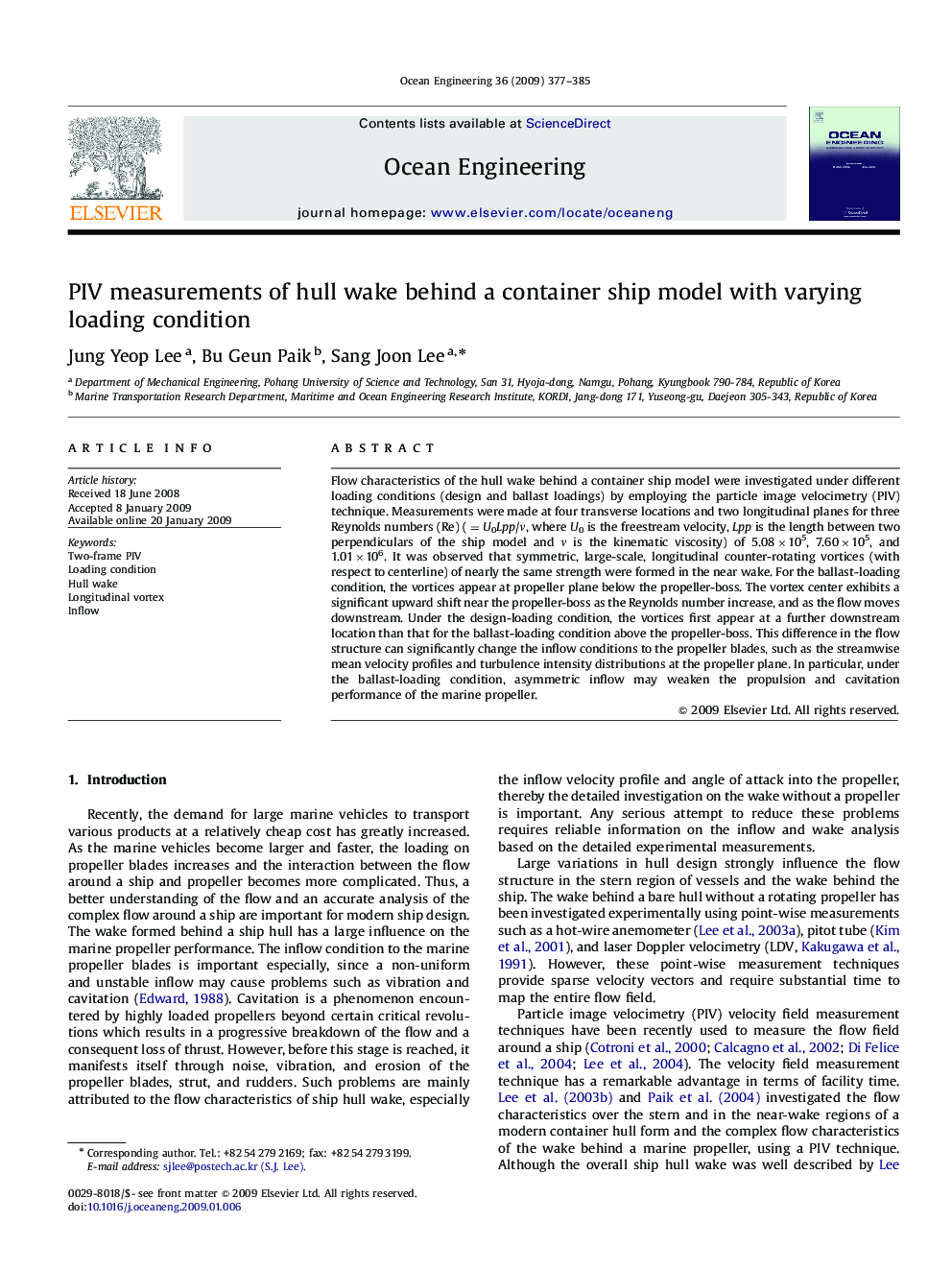| Article ID | Journal | Published Year | Pages | File Type |
|---|---|---|---|---|
| 1726751 | Ocean Engineering | 2009 | 9 Pages |
Abstract
Flow characteristics of the hull wake behind a container ship model were investigated under different loading conditions (design and ballast loadings) by employing the particle image velocimetry (PIV) technique. Measurements were made at four transverse locations and two longitudinal planes for three Reynolds numbers (Re) (=U0Lpp/ν, where U0 is the freestream velocity, Lpp is the length between two perpendiculars of the ship model and ν is the kinematic viscosity) of 5.08Ã105, 7.60Ã105, and 1.01Ã106. It was observed that symmetric, large-scale, longitudinal counter-rotating vortices (with respect to centerline) of nearly the same strength were formed in the near wake. For the ballast-loading condition, the vortices appear at propeller plane below the propeller-boss. The vortex center exhibits a significant upward shift near the propeller-boss as the Reynolds number increase, and as the flow moves downstream. Under the design-loading condition, the vortices first appear at a further downstream location than that for the ballast-loading condition above the propeller-boss. This difference in the flow structure can significantly change the inflow conditions to the propeller blades, such as the streamwise mean velocity profiles and turbulence intensity distributions at the propeller plane. In particular, under the ballast-loading condition, asymmetric inflow may weaken the propulsion and cavitation performance of the marine propeller.
Related Topics
Physical Sciences and Engineering
Engineering
Ocean Engineering
Authors
Jung Yeop Lee, Bu Geun Paik, Sang Joon Lee,
